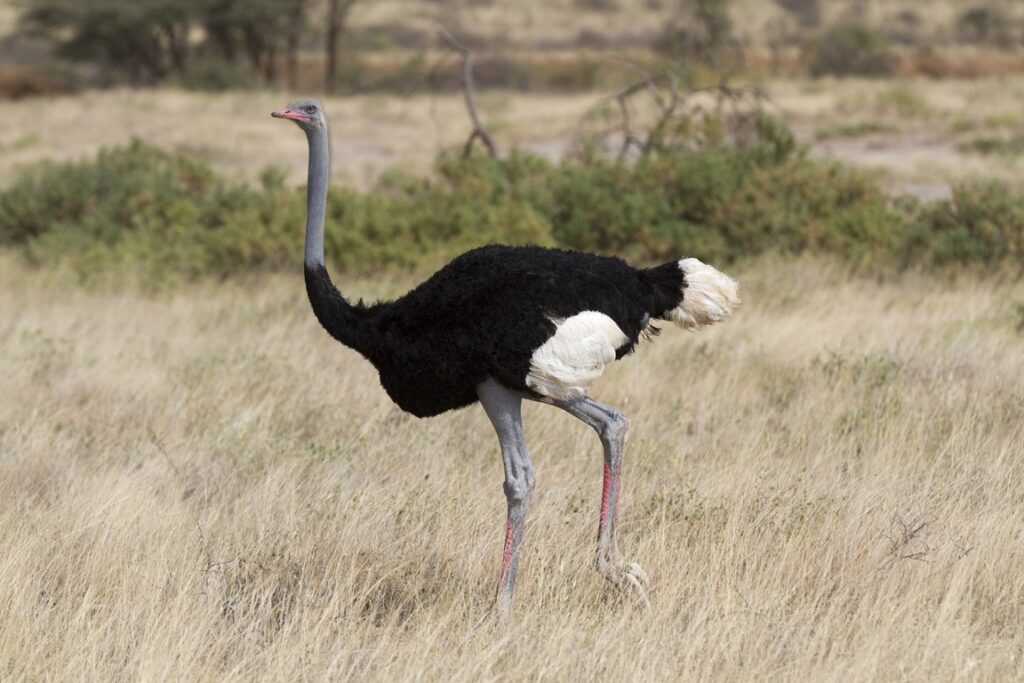Samburu National Reserve is a rugged and semi-desert park located in Samburu County. The reserve neighbors the homes of the Samburu tribe of Kenya, a tribe known for their remote culture, and pastoral and nomadic way of life. Due to its remote distance and the fact that it was inaccessible for many years, the park has retained a naturally serene and quiet feeling. Besides the numerous wildlife found in this game reserve, the park is also a bird haven.

The three national reserves of Buffalo Springs, Samburu and Shaba form a big block of conservation area in the remote Central Northern Kenya. The lifeline of these reserves is the Ewaso Ngiro River. They occupy Isiolo and Samburu Districts, the home to the pastoralists’ communities of the Boran, Gabra and the Samburu of Kenya. Here the north meets the south. These reserves are unique in that you can view the Southern and northern dwelling species co-exist, hence the term north meets the South. Samburu reserve is the natural home to the Samburu special five, not much common like the “Big five” but really exciting and unique to sight, and only found in the Northern part of Kenya. This refers to the area immediately after crossing the Equator in Nanyuki. So who are the Samburu special five? They include the Reticulated Giraffe, Beisa Oryx, Grevy’s Zebra, Gerenuk and Somali Ostrich. Measuring approximately 104sq. kilometres (approx. 65sq. miles) in size, this unfenced savannah grassland is roughly 350km (217 miles) from Nairobi. It is relatively small in size compared to other Kenyan parks, such as Tsavo or Masai Mara. Samburu national reserve derives its name from the Samburu people of Kenya who have lived in the area for many years. The Uaso Nyiro River cuts through this reserve, drawing a big population of Kenya animals to the park. The river bustles with activity from its huge population of Nile crocodile. The reserve’s topography is mainly open savannah (grassland) with clusters of acacia trees, forest, thorn trees and grassland vegetation.
Samburu National Reserve was one of the two areas in which conservationists George and Joy Adamson raised Elsa the Lioness. Their story was made famous by the bestselling book and award-winning movie “Born Free”. The game reserve is renowned for its rare species of animals unique to the park, namely: the long necked gerenuk, Grevy’s zebra, reticulated giraffe and Beisa onyx. The elusive Kenya leopard is often known to visit the park, especially in the evenings.
Other Kenyan wildlife present in the park includes cheetahs and lions, as well as elephants, buffalo and hippos. Birdlife is as plentiful as wildlife at Samburu National Reserve, which boasts over 350 different species of birds including vultures, kingfishers, marabous, bateleurs, guinea fowl, Somali ostriches and others.
How to get there
By Road: Use your own vehicle, take public transportation, or book an open-topped minibus or safari van tour with a tour guide. The park is located about 345km (approx. 214 miles) from Nairobi, or about a five-hour drive. The roads and tracks to the park are all weather. The reserve is accessible by road via Isiolo and Archer’s Post.
By Air: The game reserve is accessible by air and there are daily flights from Nairobi to Samburu that you can book online. Travel time is about 45 minutes and the flights land at the park’s airstrip. Private charter flights are also allowed to use the airstrip.
What to see and do
Samburu National Reserve is situated at the southeastern corner of Samburu District in the Rift Valley Province of Kenya. It is bordered to the south by Ewaso Nyiro River, which separates it from the Buffalo Springs National Reserve. The reserve covers an area of 165 Km² and is located around 345Km from Nairobi.
Climate
The climate in Samburu is hot and dry during the day, and cool during nights and evenings. Average maximum temperatures are around 30°C (85°F) with minimum temperatures of approximately 20°C. Most rain falls between March and May,
with short rains falling from November to December, recording a total maximum rainfall of 350mm. July through October and January through March are mainly hot and dry.
